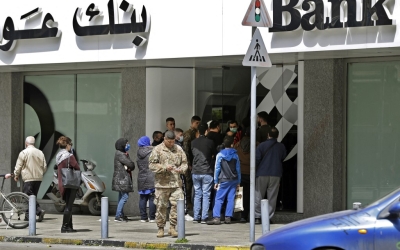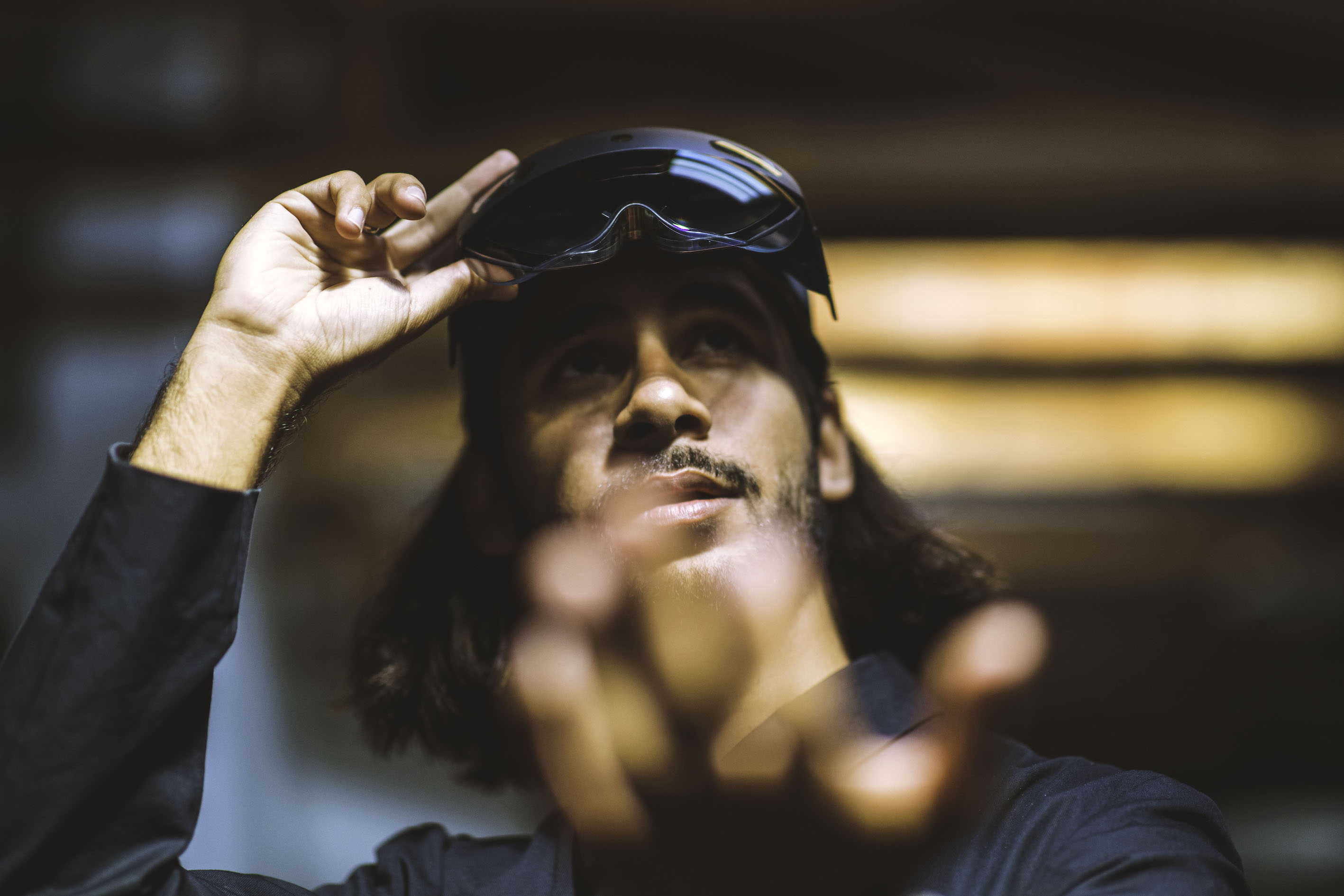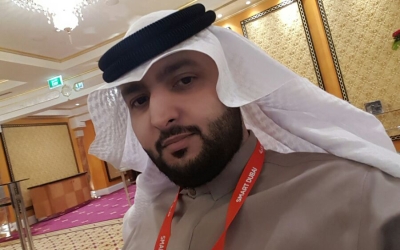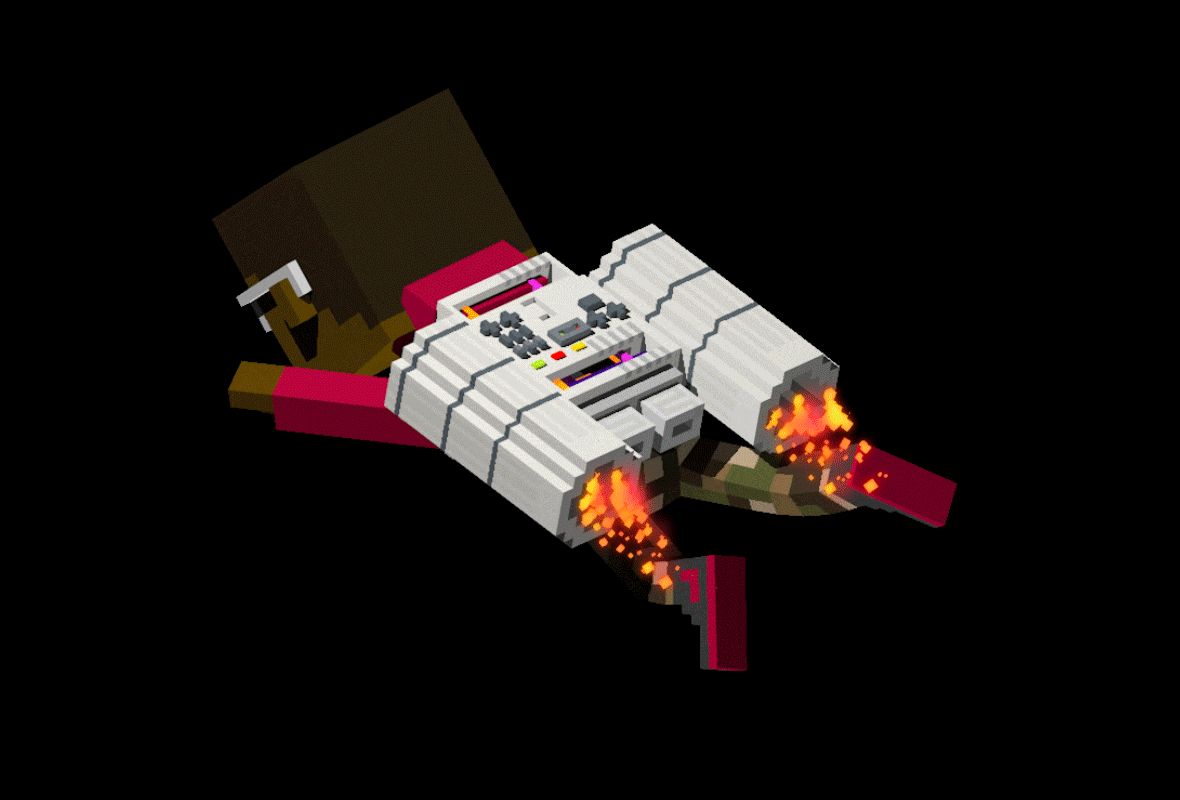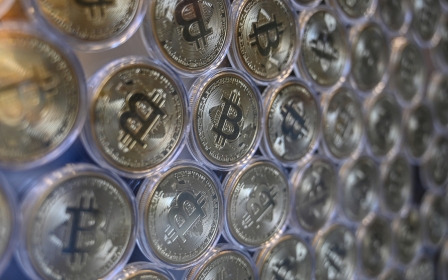Jadu: The jetpack and hoverboard NFTs transporting users through the Metaverse

We’re currently living through an interesting period in the ongoing information revolution with words like blockchain, cryptocurrencies and NFTs filtering into the mainstream.
For their proponents, they herald the next stage in the evolution of internet technologies, but for others their significance is much greater: they present a watershed moment for humanity and a panacea to the world’s economic instability and unequal distribution of wealth.
New MEE newsletter: Jerusalem Dispatch
Sign up to get the latest insights and analysis on Israel-Palestine, alongside Turkey Unpacked and other MEE newsletters
Nevertheless, ordinary people are only likely to encounter such terms as trends on social media or in articles about cryptocurrency or people making millions from selling jpeg images that can be saved on anyone’s hard drive.
Some critics warn that the current frenzy of headlines for NFT sales masks a very real possibility of a bubble - one that may burst soon.
Though the artwork of many NFTs may be questionable, the value of these digital assets lie in the technology hidden behind the images.
So what is an NFT?
An NFT stands for "non-fungible token", which essentially means a digital asset that cannot be swapped for something else.
Assets become non-fungible due to characteristics that are unique to them. A painting, for example, will be unique due to its originality and will derive value from that characteristic.
Prints of that painting will lack the characteristic of originality and will therefore not have the same value.
Banknotes, on the other hand, derive their value from a characteristic shared with other banknotes and can be swapped for denominations of equal value. They are, therefore, fungible.
When it comes to digital art NFTs, the originality of a work can be recorded in a tamperproof manner using blockchain technology.
The benefit for artists or owners of NFTs is that they are protected from forgery by virtue of this accessible ledger and are always connected to any subsequent use of their digital art, from which they can derive royalties.
So while a "right-click and save" will allow anyone to make a copy of a jpeg image, the original keeps its unique provenance.
Currently, common uses for NFTs are as profile pictures and assets within virtual environments, such as augmented reality platforms and the Metaverse, recently trumpeted by Meta CEO Mark Zuckerberg.
Jadu
One emerging success story involving NFTs has been a start up led by augmented reality pioneer Asad J Malik.
Malik was born in Abbottabad, Pakistan and moved to the Unites States in 2016 where he worked on multiple projects as a director, producer and creator. His most recent venture is an augmented reality NFT project called Jadu, which produces digital assets, in this case jetpacks and hoverboards, for use in augmented reality settings.
He says purchasing NFTs, like Jadu Jetpacks, is similar to "investing in the success of a company, or a game, or a world," adding:
"If that company or game world does well over time, your assets are probably appreciating. That’s why we have so much interest, and why people are spending so much on our jetpacks - because they trust in our company and what we’re trying to deliver - value. And if we do that, then their jetpacks should be worth more.”
Since launching in September 2021, Jadu Jetpacks has seen its original price-point increase from 0.111 ETH (Ethereum, a cryptocurrency) to 6.92 ETH which, as of early January, amounts to a monetary value of $22,630. The rarest item in the collection, a gold jetpack, sold for 111 ETH ($350,000) in October.
With the Hoverboard collection, which launched a couple of months after the Jetpacks were released, the project partnered with major profiles to create signature editions including Formula One World Champion, Lewis Hamilton and American rapper, Snoop Dogg.
Jadu has earned a lot of attention for its quick success, but also for its innovation and the crew behind the project.
Malik and his NFT team have been working with AR technology for roughly six years. His first project, Terminal 3, was inspired by his own experiences as a Pakistani travelling to the US.
'Because existing platforms were usually parts of big tech companies… we just felt the content they were putting out into the world wasn’t very culturally interesting'
- Asad J Malik, Jadu
As part of the project, which was set up inside a physical interrogation room, participants were made to wear a hololens virtual headset.
In front of them would appear the projection of a migrant trying to get into the country, while the participant, or "viewer", would assume the role of a US customs officer. The viewer would then interrogate the hologram before deciding on whether they would be allowed to enter or not.
After the interrogation, the participant is led to a second room where they are forced to deliver their verdict to the actual person represented by the hologram, who had been awaiting their judgement the entire time.
The project received widespread acclaim and was featured at the 2018 Tribeca Film Festival where it was praised for its subversive storytelling and its unique use of technology and perspective.
Terminal 3 was Malik’s first major foray into AR storytelling, but he recognised a unique gap in the market that wasn’t being met.
'Decentralisation'
“Really, the point we were getting at is that we felt the need to build our own AR platform," Malik says.
“Because existing platforms were usually parts of big tech companies… we just felt the content they were putting out into the world wasn’t very culturally interesting.”
For tech analysts, a combination of NFTs and virtual reality platforms are powering the next iteration of the internet by encouraging decentralised, user-based development, infrastructure, and financing.
After Terminal 3, Malik developed an app called Jadu Hologram, that lets TikTok users add AR projections of their favourite artists like Vic Mensa, Palaye Royale, and even Pussy Riot, to their own videos.
The team’s expansion into those spaces led to the creation of Jadu Jetpacks and subsequently Jadu Hoverboards.
Jadu Jetpacks and Hoverboards are NFTs, but function more like accessories to other NFT art.
After purchasing one of the jetpacks, a user can download the Jadu app that renders NFTs from partnering collections into 3D, animated characters in real time.
These characters can then be equipped with a Jadu Jetpack as an accessory, allowing the user to interact with them on a smart device as they make them run, jump, and fly around in AR.
A number of NFT projects have already partnered with Jadu, including the highly successful (and valuable) Meebits collection, making it one of the first, major "horizontal" NFT projects on the market - and its value is partly determined by said partnerships.
Scarcity is also a source of value for Jadu with only 1,111 Jetpacks and 6,666 Hoverboards released, as is the reputation Malik's team has earned for trustworthiness, a factor still important in a market riddled with scam projects and so-called "rug-pullers".
Nevertheless, the question of why someone would spend thousands of dollars to get their hands on one, especially when there are free AR apps available for mobile gamers, such as Pokemon Go and Roblox, remains.
The short answer is because these Jetpacks are essentially assets that will function within, and interact with, the much-talked-about Metaverse. This means they possess utility that will accrue in value as the Metaverse becomes more widely adopted.
Furthermore, as the market becomes saturated with similar products, the original Jetpacks will only become more rare, further appreciating in value. That is of course, if current market trends continue.
Notwithstanding the possibility of a market crash, for the time being, this is essentially why people are willing to pay such large amounts for a Jadu Jetpack or Hoverboard - they’re early investors in new technology that is exclusive and scarce.
Metaverse
The future of NFTs is closely aligned with the uptake of the Metaverse; recently popularised by Mark Zuckerberg's announcement that the virtual reality network would define much of his companies' future products.
"The Metaverse isn’t something new. It’s been around, but fragmented across devices and experiences," says Ri, the product owner of Copper, a platform part of the Alchemist ecosystem that employs digital solutions for open and transparent token launch auctions including for NFTs.
"The new development is that we’ve figured out how to connect all of its fragments using NFTs and the blockchain," he adds.
"People already love collecting and curating in the physical world. The digital world is no different, and NFT-like digital collectibles have already existed for decades."
Ri referred back to the importance of provenance on the blockchain, and how it can generate serious value for creators as well as collectors and traders.
“Provenance and traceability is actually more transparent on the blockchain than in the physical world, and those are the factors that determine the value of an artwork.”
"NFTs on the blockchain are unique," says Ri. "They have timestamps for when they were created and who created them. They are transferable as unique items."
There is obvious appeal in knowing that artists can be correctly attributed to and fairly compensated for their work which, in turn, can accrue in value for those who invest in it.
That said, the current system of purchasing NFTs is still far from ideal.
Ri maintains that this is a significant issue on the Ethereum platform that has become the primary cryptocurrency for the NFT market.
"High Ethereum [network] fees and learning how to transact on Ethereum through a digital wallet is [a] challenge… it cuts out a lot of people from using it because of how expensive it is. These costs will definitely come down… But for now, it closes off a lot of pretty powerful use cases.”
Despite the high price of admission, Ri is adamant that blockchain technology is the way forward; a watershed moment for our technological development.
“It is a completely new way of transferring value without relying on intermediaries. This opens up a wide range of experiments that have never been possible before - anything from self-organising communities to decentralised art galleries.
"This space might be somewhat overvalued because it is novel and new... But it is for sure here to stay.”
New opportunities
The US and China still dominate much of the blockchain industry - from its trade and commerce to the crypto mining required to process transactions. Consequently, for much of the world, the high price point of entry potentially shuts many out from the perceived benefits and future utility of the NFT ecosystem.
Still, Malik believes that blockchain technologies are the natural evolution of how we interact with the internet and present potential solutions to the over-concentration of wealth.
His success in the space garnered much attention in Pakistan and brought many ambitious artists and entrepreneurs out of the woodwork, keen to replicate his endeavours as potential pathways out of the economic instability many of them have endured.
"(My projects were) national news (in Pakistan) and suddenly the entire country wanted to make an NFT, and my inbox immediately blew up," Malik says of his success.
Blockchain technology is still young, and that means there’s a plasticity to it that doesn’t exist on the internet anymore. Standard apps are now relatively polished, and users who interact with them are essentially following the rules set in place by experienced user experience (UX) designers.
Many millennials can still remember a time when the internet was a novel concept - when dial-up required a telephone line; when torrents and P2P file sharing were only accessible to the technically savvy. According to Malik, it was still raw and unrefined, and there was a strong incentive to explore and experiment with code as the technology was still largely underregulated.
NFTs on the blockchain find themselves in a similar position - there is so much experimentation and (relatively) little regulation. So people with new ideas, fresh perspectives, and technical ability could benefit from being early adopters in an ecosystem that will likely dominate the tech landscape in the near future.
'There is a really strong opportunity for people from that part of the world to engage in this space as they tend to be quite technologically savvy'
- Asad J Malik, Jadu Jetpacks
Malik points out that many millennials from South Asian backgrounds were encouraged to focus on studies and STEM-related jobs; a youth culture essentially defined by erudition and getting good grades in school.
Self-expression and artistic ventures are often discouraged from an early age, and consequently, many end up working in high-tech environments, but, as Malik mentions, with “little incentive to innovate or express themselves”.
He believes NFTs present the perfect opportunity for many South Asians to break that mould, given their familiarity with internet-based technology.
“There is a really strong opportunity for people from that part of the world to engage in this space as they tend to be quite technologically savvy.
"They’re way more technologically inclined, due to their circumstances, than your typical American teenager who’s been playing on an iPad since they were four. I do think that that gives them an advantage, right now.”
Although he currently has no official coordinated effort in place to support fellow Pakistanis and their exploration in the NFT space, Malik does go out of his way to help those who have done their research and show genuine intent.
“I’m now on the board of the Pakistan American Foundation that looks at culture from our region and how to communicate that over here [in the US]... I often get to bring AR, VR, NFTs, and other media to their board meetings – just the idea that often people from our part of the world end up being in tech companies but not involved in expression.”
The NFT space is still new and experimental, but that can encourage innovation. High price points may present significant barriers to entry, but the quickly changing landscape means there are still plenty of opportunities to capitalise on.
Already, Solana and Cardano blockchain platforms are making waves because of their lower price points and low-network-fee models for NFTs but this hasn't yet changed Ethereum's dominance of the market.
NFTs are an unprecedented merger between art and technology, with avenues to earn decent revenue if you have the right team with the necessary technical chops.
The ongoing utility they provide may not seem tangible in the same way traditional artworks do. But in a world where digital universes will likely come to dominate, our own perceptions of assets and their values are sure to change and adapt.
Middle East Eye delivers independent and unrivalled coverage and analysis of the Middle East, North Africa and beyond. To learn more about republishing this content and the associated fees, please fill out this form. More about MEE can be found here.


